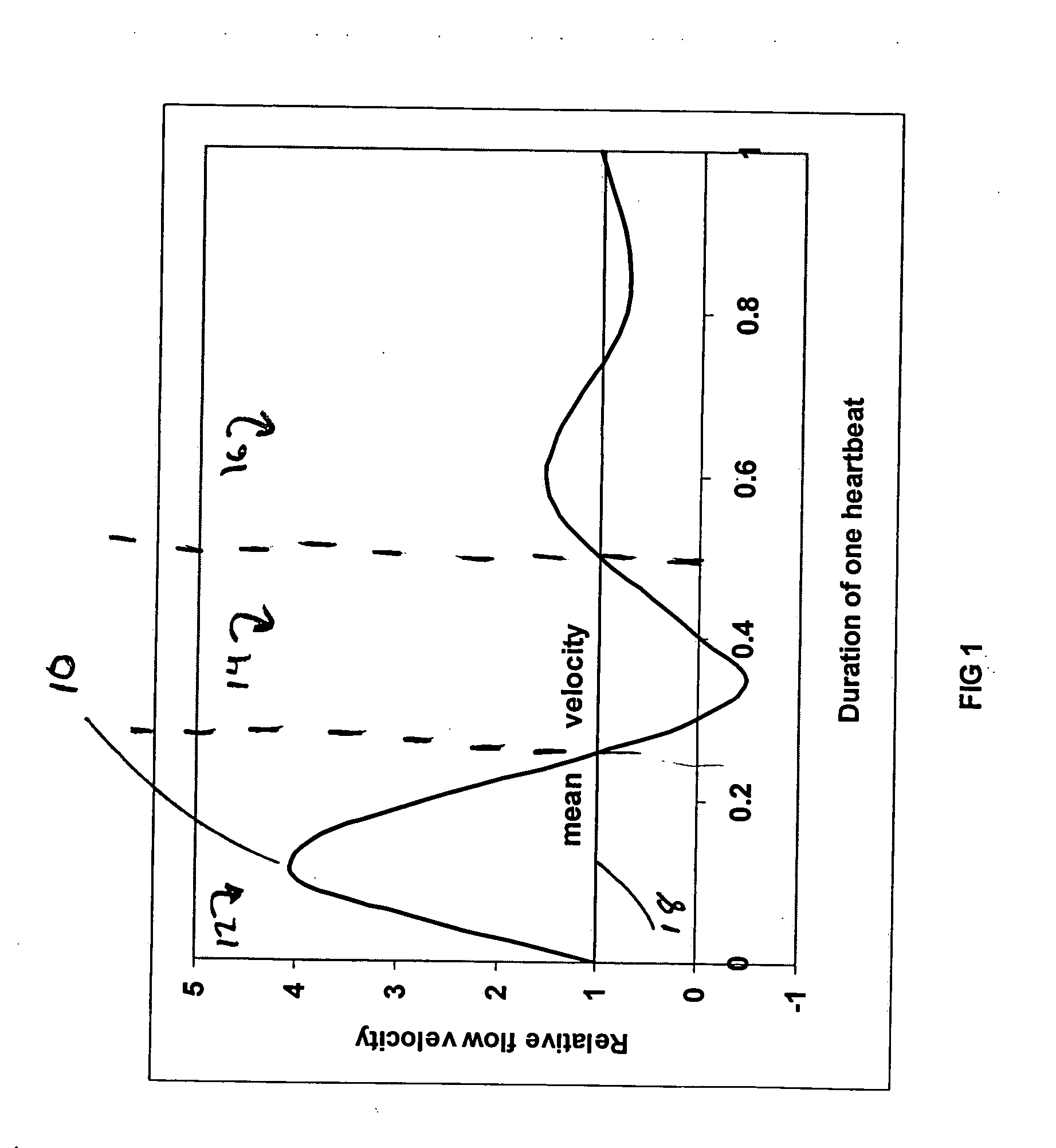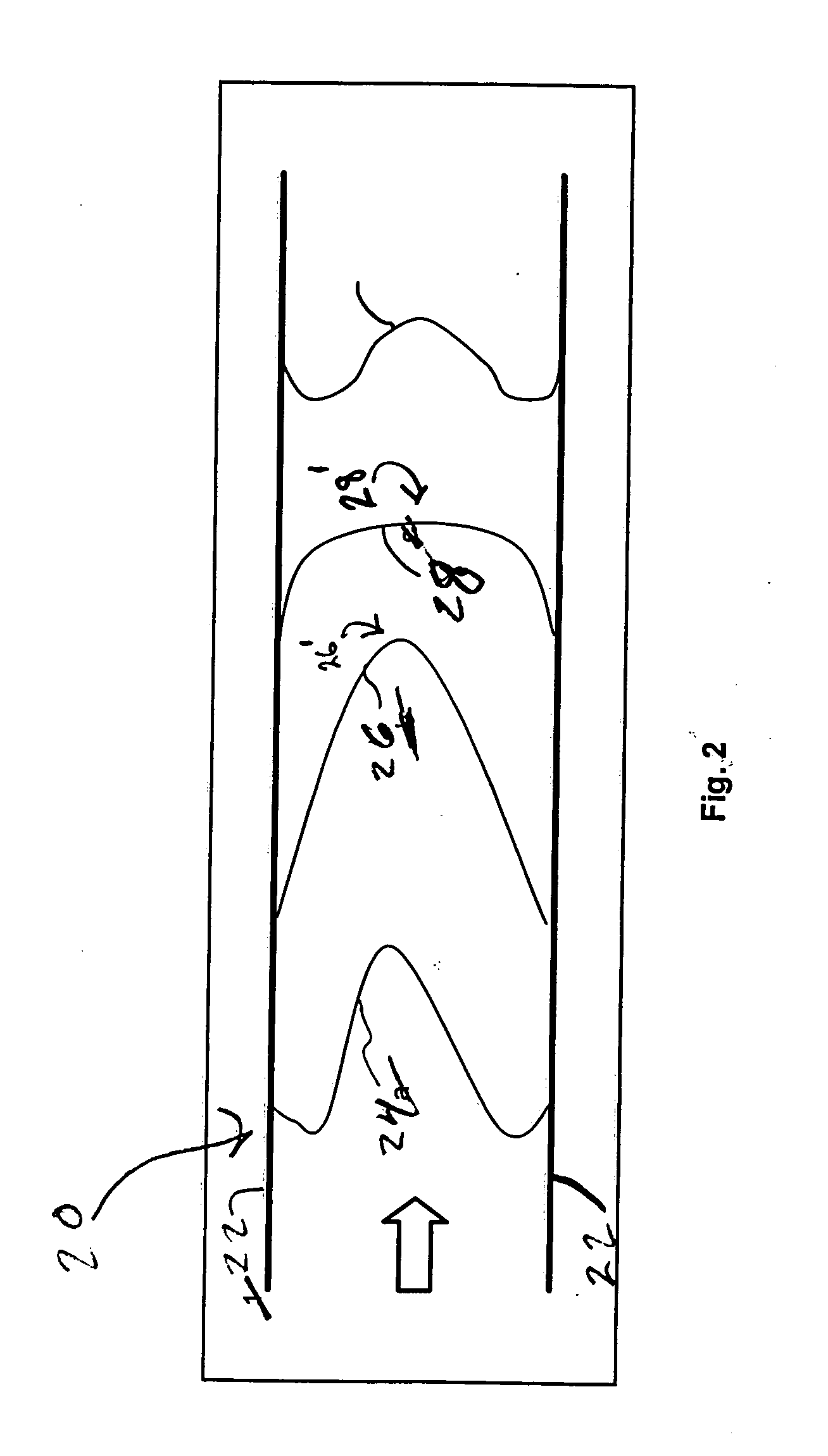Method and system for quantification of arterial stenosis
a technology of arterial stenosis and quantification method, applied in the field of non-invasive vascular diagnostic techniques, can solve the problems of preventing morbidity, disability and premature death, and difficult to reproduce exact flow velocity profile between arteries and/or segments of one artery, and achieves the effect of reducing the risk of vascular stenosis
- Summary
- Abstract
- Description
- Claims
- Application Information
AI Technical Summary
Benefits of technology
Problems solved by technology
Method used
Image
Examples
Embodiment Construction
[0042] The following is a description of the present invention with reference to the attached drawings, wherein like reference numerals will refer to like elements throughout. To illustrate the present invention in a clear and concise manner, the drawings may not necessarily be to scale. Additionally, features that are described and / or illustrated with respect to one embodiment may be used in the same way or in a similar way in one or more other embodiments and / or in combination with or instead of the features of other embodiments.
[0043] The present invention relates to a system and method for quantifying a level of arterial stenosis, i.e., arterial lumen area reduction in a vascular system, and will be described with respect to a human vascular system. It should be appreciated, however, that the invention also can be applied to non-human vascular systems, e.g., animal vascular systems.
[0044] According to an embodiment of the invention, Doppler shift data from multiple heartbeats ...
PUM
 Login to View More
Login to View More Abstract
Description
Claims
Application Information
 Login to View More
Login to View More - R&D
- Intellectual Property
- Life Sciences
- Materials
- Tech Scout
- Unparalleled Data Quality
- Higher Quality Content
- 60% Fewer Hallucinations
Browse by: Latest US Patents, China's latest patents, Technical Efficacy Thesaurus, Application Domain, Technology Topic, Popular Technical Reports.
© 2025 PatSnap. All rights reserved.Legal|Privacy policy|Modern Slavery Act Transparency Statement|Sitemap|About US| Contact US: help@patsnap.com



